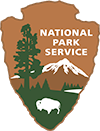Browse Badges
Community
Capitol Reef
National Park
Utah

Adventure Badge
Premium, USA-made, Adhesive Metal Badge
$20.00
Adventure Badge
Premium, USA-made, Adhesive Metal Badge
Commemorate your experience at Capitol Reef with a premium, USA-made Adventure Badge for your vehicle, RV, or camper.
Would you like to add a date to your badge?
Add this national park to your Adventure Log with the button below
and we'll add the year of your adventure to your badge.
Park Information
Capitol Reef National Park is an American national park in south-central Utah. The park is approximately 60 miles (97 km) long on its north–south axis and just 6 miles (9.7 km) wide on average. The park was established in 1971 to preserve 241,904 acres (377.98 sq mi; 97,895.08 ha; 978.95 km2) of desert landscape and is open all year, with May through September being the highest visitation months.
Partially in Wayne County, Utah, the area was originally named "Wayne Wonderland" in the 1920s by local boosters Ephraim P. Pectol and Joseph S. Hickman. Capitol Reef National Park was designated a national monument on August 2, 1937, by President Franklin D. Roosevelt to protect the area's colorful canyons, ridges, buttes, and monoliths; however, it was not until 1950 that the area officially opened to the public. Road access was improved in 1962 with the construction of State Route 24 through the Fremont River Canyon.
The majority of the nearly 100 mi (160 km) long up-thrust formation called the Waterpocket Fold—a rocky spine extending from Thousand Lake Mountain to Lake Powell—is preserved within the park. Capitol Reef is an especially rugged and spectacular segment of the Waterpocket Fold by the Fremont River. The park was named for its whitish Navajo Sandstone cliffs with dome formations—similar to the white domes often placed on capitol buildings—that run from the Fremont River to Pleasant Creek on the Waterpocket Fold. Locally, reef refers to any rocky barrier to land travel, just as ocean reefs are barriers to sea travel. Source: Wikipedia
Visitor Information
All day, every day. Visitor Center vary on season and holidays.
Weather & Clothing
Monsoon Season is July to September. Heavy rains can cause dangerous flash floods.
Due to varied elevation and landscape weather can vary depending on where you are visiting. It is best to check the weather reports on the NPS website.
Activities
Camping
Hiking
Horseback Riding
Rock Climbing
Visitor Information
All day, every day. Visitor Center vary on season and holidays.
Weather & Clothing
Monsoon Season is July to September. Heavy rains can cause dangerous flash floods.
Due to varied elevation and landscape weather can vary depending on where you are visiting. It is best to check the weather reports on the NPS website.
Activities
Camping
Hiking
Horseback Riding
Rock Climbing
Find out more at the
 National Parks Service
National Parks Service
Basic Info
State
Utah
Established
December 18th, 1971
Park Size
241,905 acres